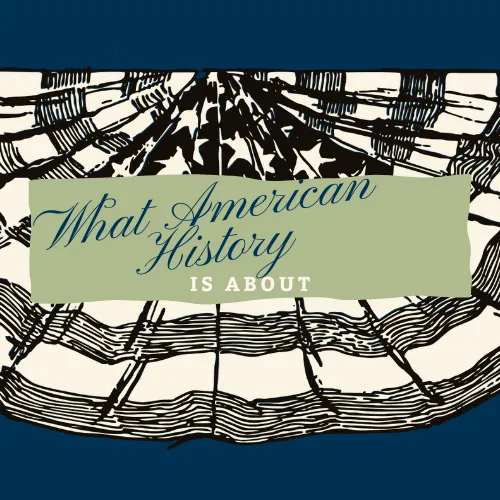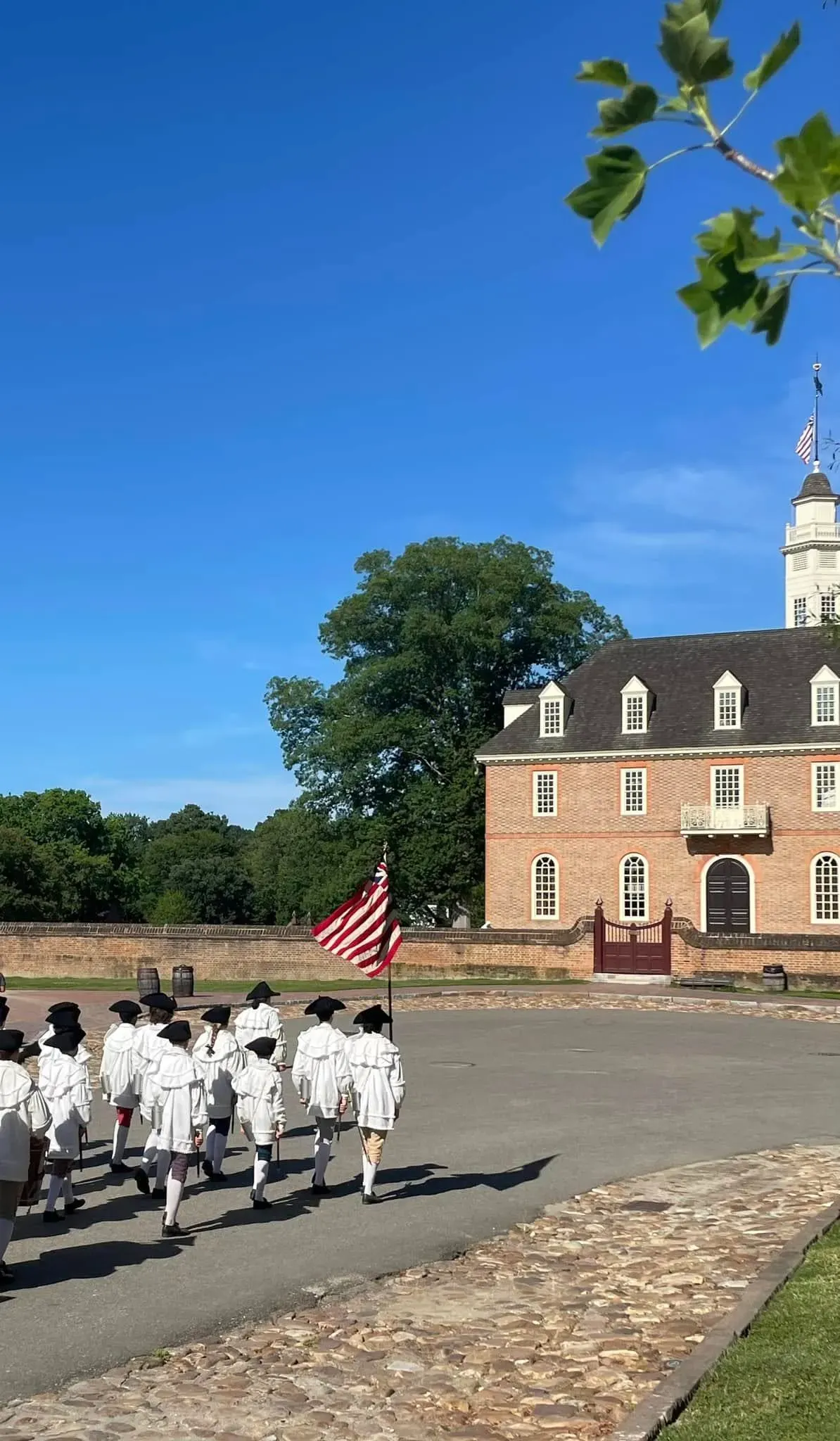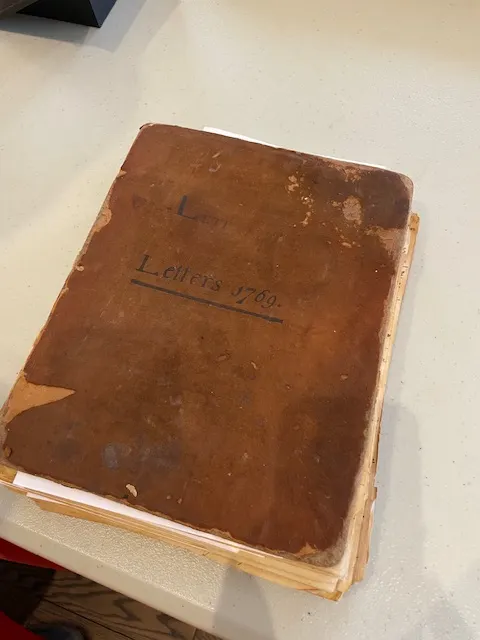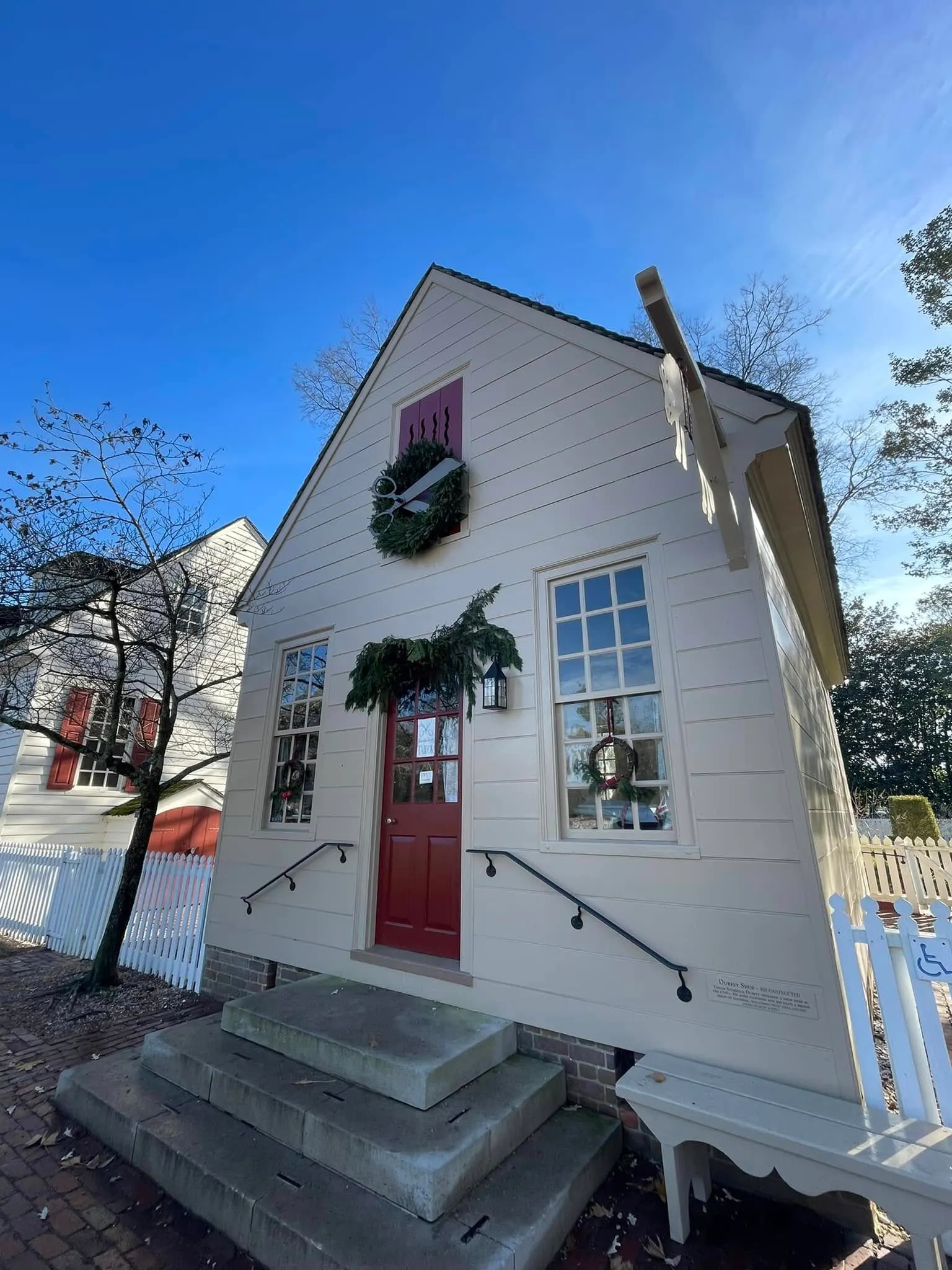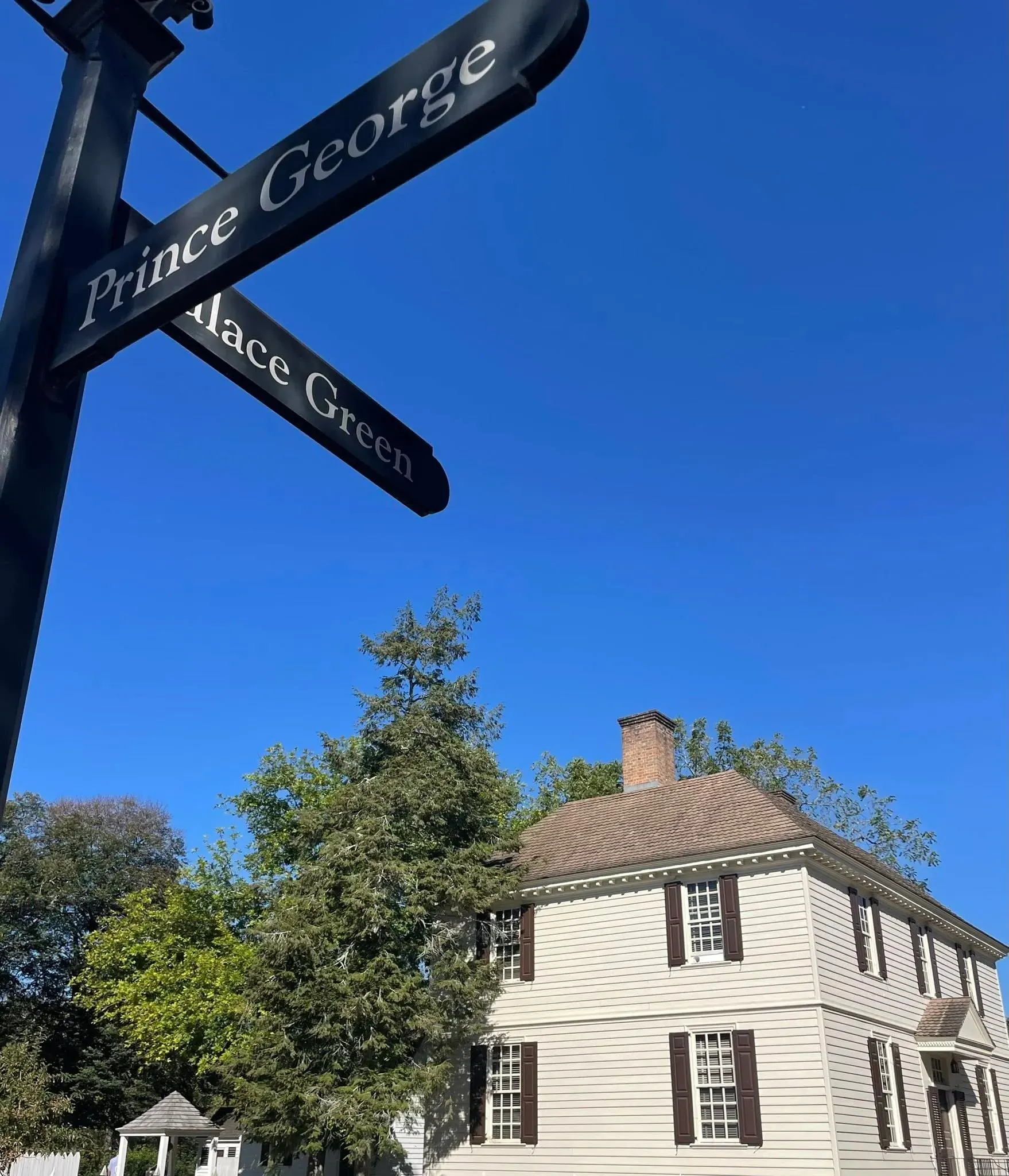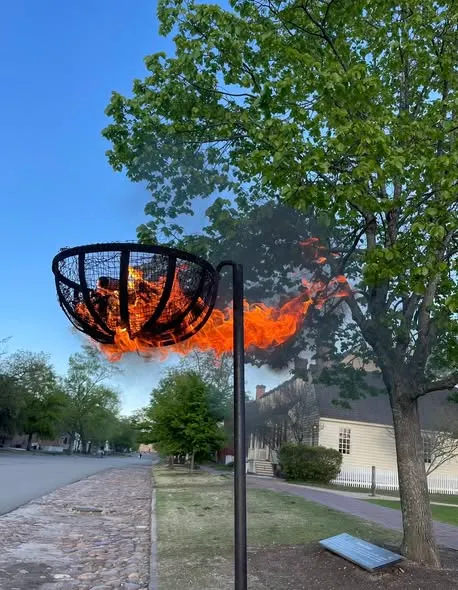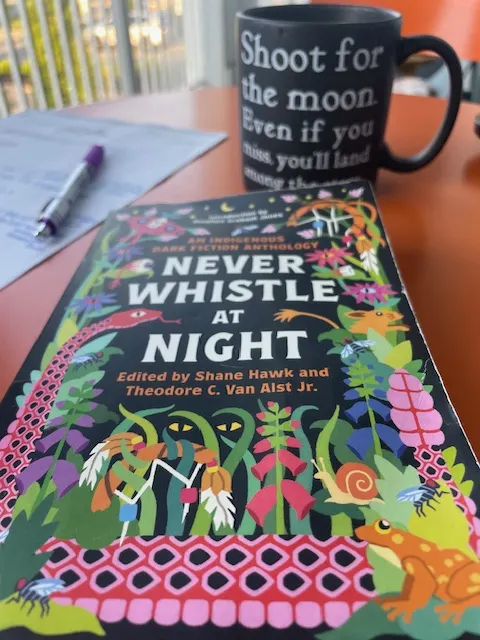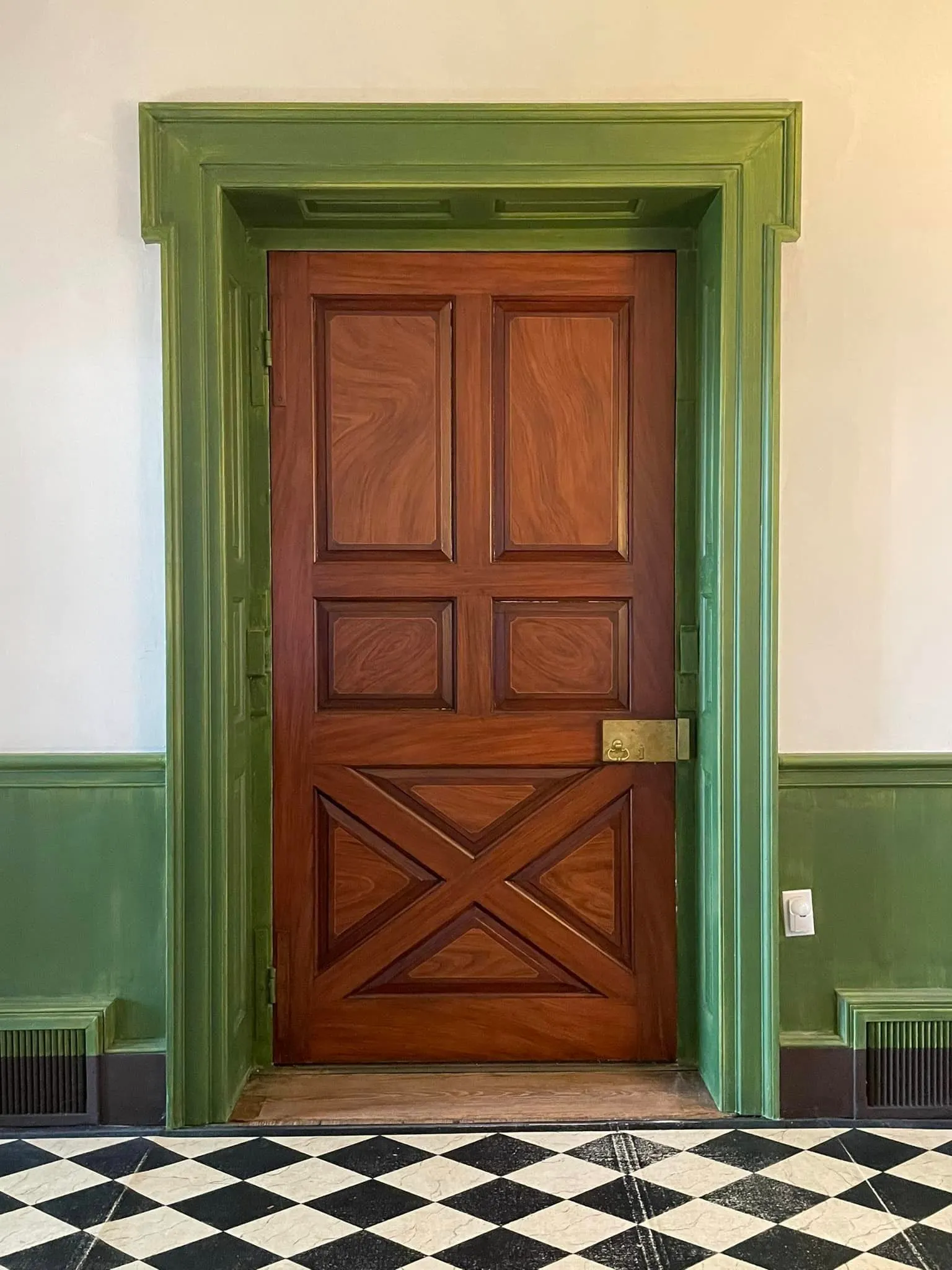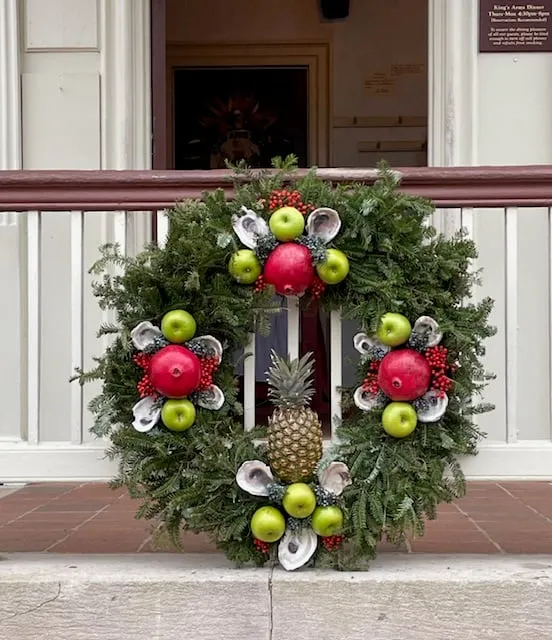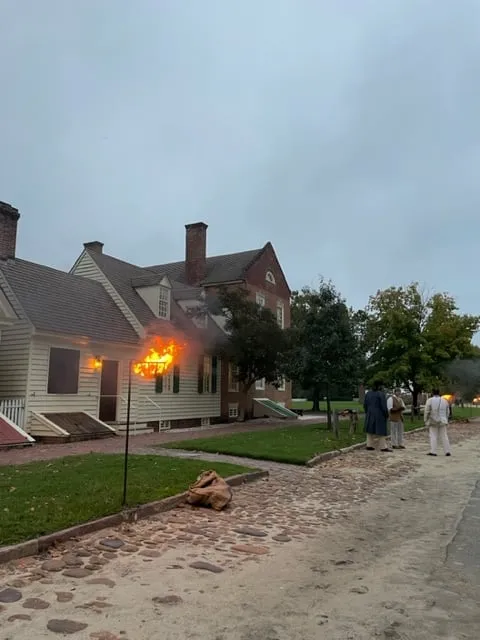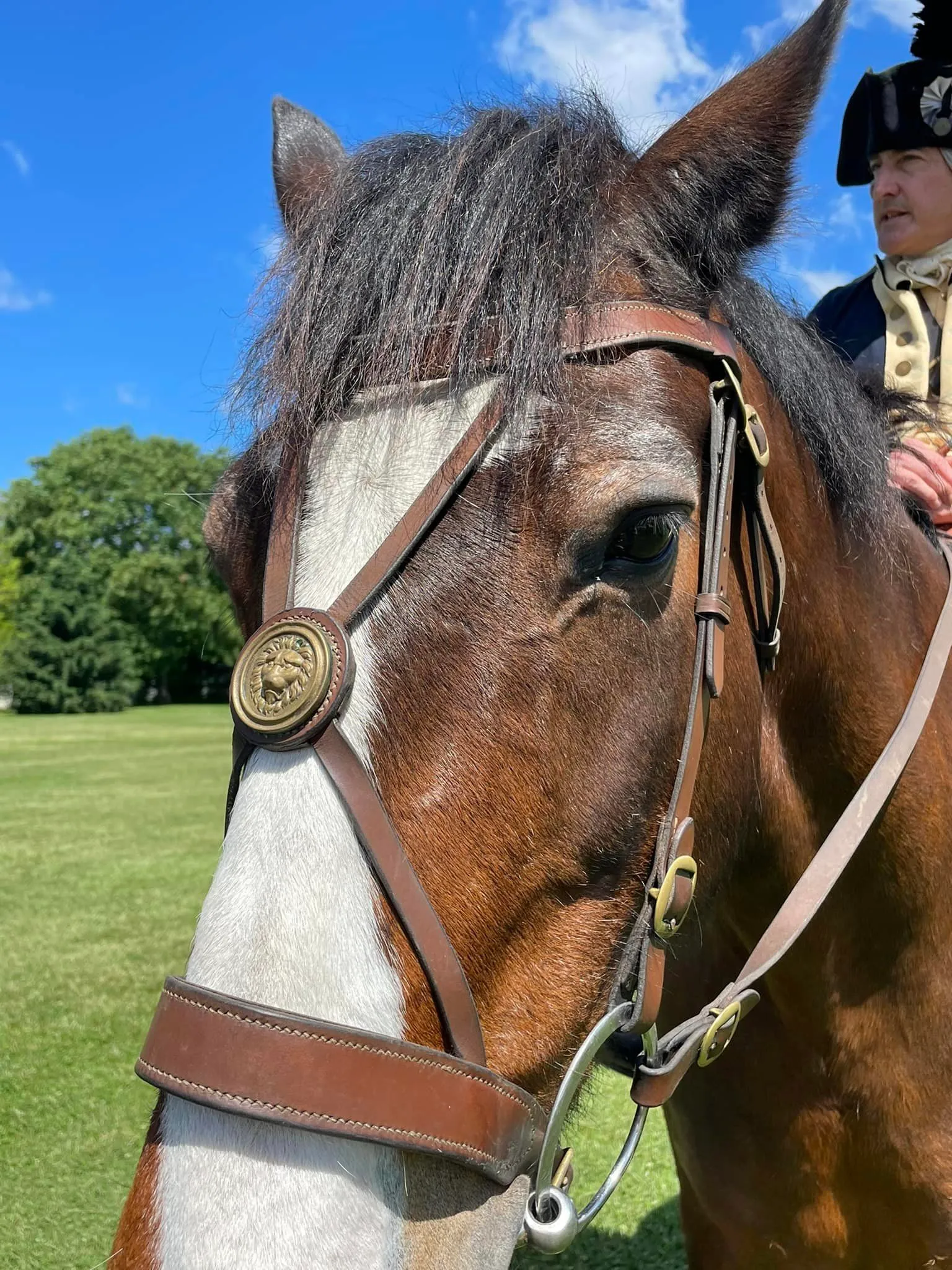From Shakespeare’s Seat to Jefferson’s Legacy: History Speaks Through Objects
My inspiration: Thomas Jefferson and John Adams brought Shakespeare home.
Did you know that while visiting Stratford-Upon-Avon in 1786, Thomas Jefferson and John Adams took a memento home? They actually splintered off a bit of Shakespeare's chair!
This little piece of wood that Kurt Smith (Colonial Williamsburg's [CW's] Thomas Jefferson) got to hold may not have looked like much, but what he told an audience about it brought me right into the 18th century.
It humanized Jefferson. Like I was in his library, talking to him about the feeling he got when he took that bit of England's treasured Shakespeare-- surely a bonding moment with one of the men he shared so much history with already.
You know their legacy: being on the committee to create our Declaration of Independence.
While on stage, the story of Jefferson's and Adams' escapade was shared by Kurt. In context, he was talking about how something can seem so insignificant (my paraphrasing) but hold so much history and inspire intense emotion.
And this moment inspired me to write about a few objects I've encountered; objects that move and motivate me as a history-lover. Those experiences of fascination combined with curiosity.
In fact, I added "objects" to my mission statement for this reason.
RELATED: Read more here about the chair incident by opening a new tab.
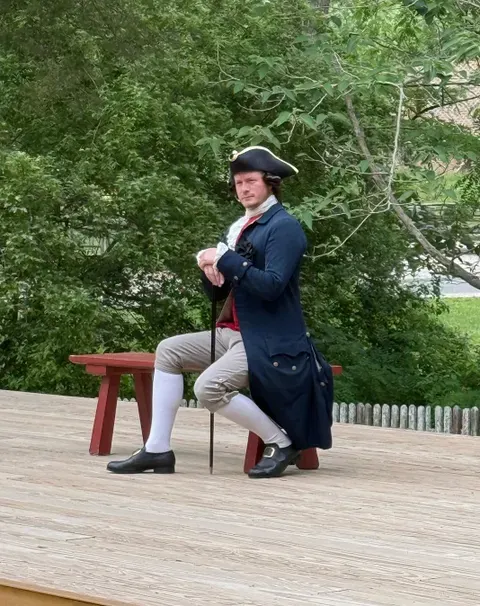
Kurt Smith as Thomas Jefferson in CW
Disclaimer: As a blogger, I use affiliate links sometimes! I may receive commission from purchases I share; it does not change your price but sometimes you might get a discount.
3 objects that spoke to me.
Object 1: Richard Henry Lee's shoe buckle.
Get to know the collection of Stratford Hall Historic Preserve.
If you've followed the blog, you know I'm slightly obsessed with Stratford Hall and their 18th century occupants: the Revolutionary Lees. If you aren't familiar, Richard Henry is the guy that introduced the resolution for independence to be voted upon in Philadelphia during the summer of 1776.
Yes, this is the vote you're thinking of: the one that took place on July 2nd, followed by the adoption of our Declaration on July 4th.
At their onsite museum, objects from Stratford's collection are thoughtfully displayed in way that motivates you to be focused and present during your visit. Instead of placing them with detailed placards, each object is numbered. This allows you to dig deeper later.
They provide you with a brochure you can take home and study, reference, or simply enjoy long-after your visit!
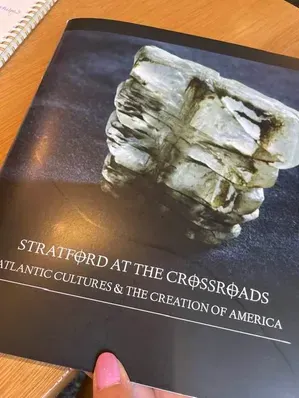
Stratford collection brochure
Richard Henry Lee's bejeweled shoe buckle is one of many things that called to me on my first visit to Stratford Hall. And it's connected to Richard Henry Lee himself as well as what I've learned about shoes and buckles at home here in CW.
What can it tell you about Richard Henry Lee?
I've heard him described as a pretty well-dressed guy. It was a gift befitting to him, as I picture him through interpretations I've both seen and heard, as well as descriptions I've read. Though it's cut glass, not precious stones, that was popular in the 18th century.
This shoe buckle, like many Colonial and early-American objects of the period, is believed to actually be from London. It's attributed to London-based George Burrows, a silver and goldsmith.
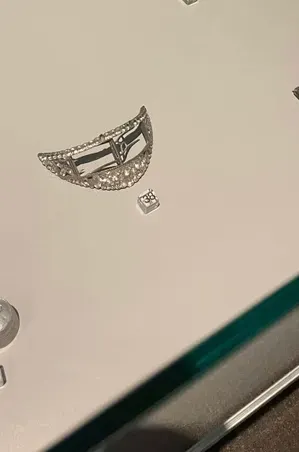
Richard Henry Lee's shoe buckle
What I've learned about shoes and buckles from the tradespeople at Colonial Williamsburg.
I've learned a great deal from the experts at CW. I love that I get the gift of a membership every year from the other half of my household.
A few bits I've learned about buckles over the years:
- buckle-making was a specialized trade, although like with Lee's shoe buckle, you could commission them from gold- or silversmiths
- coronation buckles are a tradition - you can read about King Charles III's here
- buckles were a common accessory and were typically purchased from a merchant, then added by the wearer at home
- you could keep your basic shoe for multiple purposes and accessorize with event/use appropriate buckles
RELATED: Click here to see about donating to CW and becoming a member so you can have access to learning about objects from the past through their tradespeople.
More questions inspired by Lee's shoe buckle.
Just writing about this historical object has stirred up new questions for me to ask as I visit museums and historical societies, or even notice as I read books on history.
- since these were cut glass emulating precious gems, are there buckles that have precious gems on exhibit to view- and where?
- was it easy to identify buckles from specific countries or regions?
- how expensive were buckles and how often would people buy new ones?
(if you have answers, let me know in the comments or via Instagram messaging!)
RELATED: My post introducing Stratford Hall on this blog.
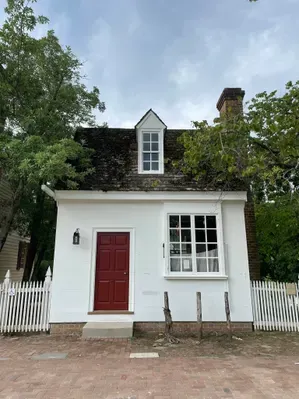
Reconstruction of shoemaker George Wilson's shop, CW
Object 2: Patrick Henry's reproduction paper file.
Have you been to Patrick Henry's Scotchtown?
If you want to get a sense of the man who is well-known for his "Liberty or Death" speech, you must.
Henry lived at Scotchtown during those pivotal years - the years in which he played a role shaping our United States history. While his wife was home, ill at Scotchtown, he was often found in Williamsburg, driving Virginians down the road to independence.
From the medicine box to the portraits on the walls, everything at Scotchtown is mesmerizing. But for this post, I have to share an object tied to the one thing most Americans are familiar with: that speech which took place in Richmond, weeks after Henry's wife passed away.
The object you can see on display at Scotchtown I recommend seeking out- because the idea and the emotion is so compelling: the reproduction of the paper file Patrick Henry used to mimic a knife thrust into his chest during his famed speech.

Reproduced paper file at Scotchtown
RELATED: This post I wrote after visiting Scotchtown as a guest of Preservation Virginia and this post reviewing Mark Couvillon's book about the Henrys' marriage.
Object(s) 3: The catalpa trees on the Palace Green.
Once in awhile, I take a seasonal tour offered in CW. On one such tour a couple years back, I learned about something that stuck with me. It's circling back to Jefferson...
If you've visited CW, you may have noticed the massive trees lining the Palace Green. Those catalpa trees were planted with purpose. The reason: Jefferson described, in detail, the number and placement of those trees in the 18th century.
Every time I see them, I think of Jefferson; I can't help it. If I stop and stare (which I sometimes do) I get lost in thoughts about who he was... how precise he was with everything from his gardens to his instructions for his daughters' education.
All when I walk across the green. To me, those catalpa trees are objects not just whispering history, but shouting it. Truly leaving a Jefferson legacy in our everyday experience living here.
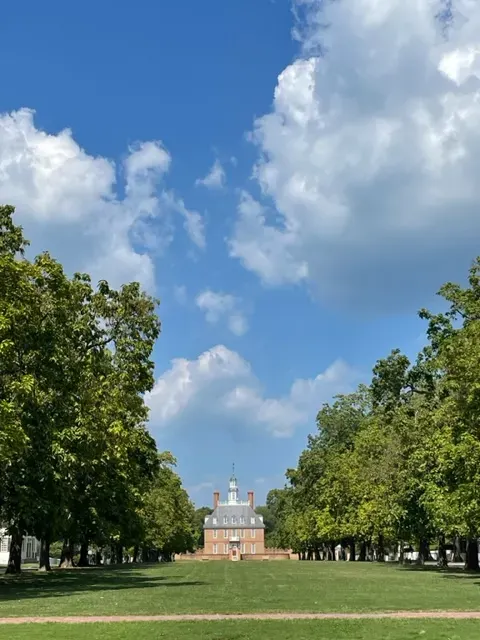
Catalpa trees lining the Palace Green
3 calls to action.
1-Put objects that speak about history in the hands of the next generation.
One of the most important things you can do to preserve history is encourage the next generation to have a passion for it.
This is why I believe History Unboxed is valuable and I became an affiliate partner. Here's a really cool thing: they have educational boxes that contain many things- including objects!
For example, with the American Revolution box the kids in your life can create a tin punch lantern in learning more about Paul Revere. Learning through objects.
Click here to check out the site and bring history home.
2-Go seek out an historical object, then dig deeper.
Not all history comes packaged in the "big events." Not all bits of it are in the largest or most famous museums.
Check out your local historical society, local museums, museums focused on objects... you'll find some true gems! They may lead you down a rabbit hole you never expected.
This "rabbit hole" experience happened to me in Palm Desert, California. At their historical society I found out about the historical significance of breeze blocks to mid-century modern architecture. Click here to read about that visit.
3-Share something about an historical object that spoke to you!
Use the comment box below or subscribe by submitting the form on this page. We can connect by email that way - I'd love to hear what you've found out there (and maybe share it on the blog)!
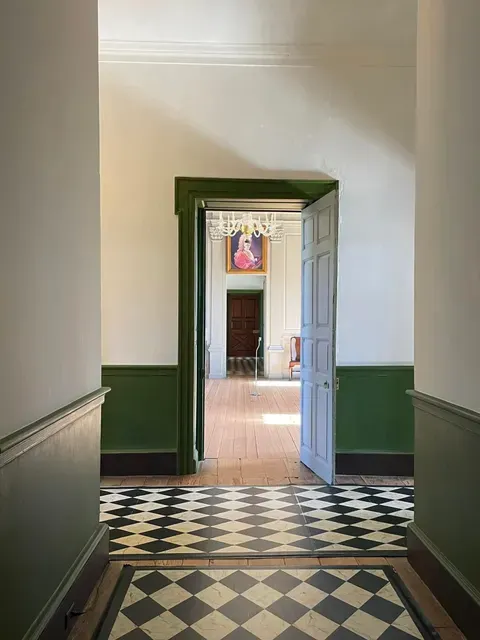
Door leading into the parlor of the main house at Stratford Hall
Closing words from history.
It looks like James Madison, who became our 4th President of the United States in 1809, wanted to bring catalpas to his new home. Check out his landscaping wish list below. To see it in full, with citations, click here.
Thoughts on digging deeper for you and possibly for me through this blog: the gardens and landscape of historic sites, popular trees in the early United States, Madison's move into the Executive Mansion... so many rabbit holes.
Landscape Account for the Executive Mansion, 31 March 1809
Landscape Account for the Executive Mansion
31. March 1809.
List of Trees & Shrubs for the Presidents Garden.1
Where to be procured2
| Large trees for Single trees & in lines | Tulip tree. | Saml. Davidson. | |
| Willow leaved Oak | |||
| Elm. | |||
| Beech. | |||
| Ash. | S. Davidson | ||
| Horse Chesnut. | Holt | ||
| Walnut (English) | Hepburn | ||
| Sugar Maple | Billey | ||
| Sycamore (English[)] | |||
| Larch. | |||
| Weeping Willow | Holt | ||
| Mulberry—English, common Chineese | |||
| Catalpa | Mr. Tayloe | ||
Are you loving the history I'm bringing to the blog? Use my online tip jar and buy me a coffee:
There is a huge practical disclaimer to the content on this blog, which is my way of sharing my excitement and basically journaling online.
1) I am not a historian nor an expert. I will let you know I’m relaying the information as I understand and interpret it. The employees of Colonial Williamsburg base their presentations, work, and responses on historical documents and mainly primary sources.
2) I will update for accuracy as history is constant learning. If you have a question about accuracy, please ask me! I will get the answer from the best source I can find.
3) Photo credit to me, Daphne Reznik, for all photos in this post unless otherwise credited! All photos are personal photos taken in public access locations or with specific permission.
